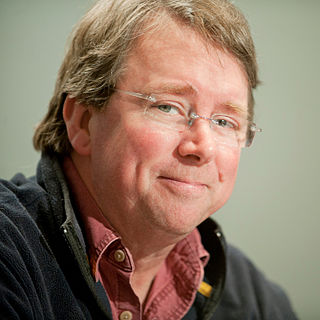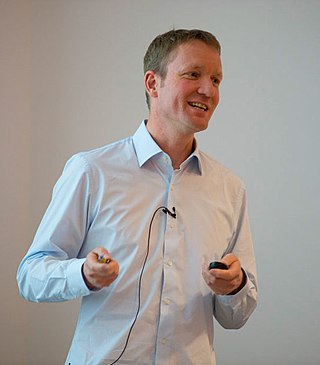The terpenoids, also known as isoprenoids, are a class of naturally occurring organic chemicals derived from the 5-carbon compound isoprene and its derivatives called terpenes, diterpenes, etc. While sometimes used interchangeably with "terpenes", terpenoids contain additional functional groups, usually containing oxygen. When combined with the hydrocarbon terpenes, terpenoids comprise about 80,000 compounds. They are the largest class of plant secondary metabolites, representing about 60% of known natural products. Many terpenoids have substantial pharmacological bioactivity and are therefore of interest to medicinal chemists.

Glucosinolates are natural components of many pungent plants such as mustard, cabbage, and horseradish. The pungency of those plants is due to mustard oils produced from glucosinolates when the plant material is chewed, cut, or otherwise damaged. These natural chemicals most likely contribute to plant defence against pests and diseases, and impart a characteristic bitter flavor property to cruciferous vegetables.

Plant defense against herbivory or host-plant resistance is a range of adaptations evolved by plants which improve their survival and reproduction by reducing the impact of herbivores. Many plants produce secondary metabolites, known as allelochemicals, that influence the behavior, growth, or survival of herbivores. These chemical defenses can act as repellents or toxins to herbivores or reduce plant digestibility. Another defensive strategy of plants is changing their attractiveness. Plants can sense being touched, and they can respond with strategies to defend against herbivores. To prevent overconsumption by large herbivores, plants alter their appearance by changing their size or quality, reducing the rate at which they are consumed.

Barbarea vulgaris, also called wintercress, or alternatively winter rocket, rocketcress, yellow rocketcress, yellow rocket, wound rocket, herb barbara, creases, or creasy greens, is a biennial herb of the genus Barbarea, belonging to the family Brassicaceae.

The Max Planck Institute for Chemical Ecology is located on Beutenberg Campus in Jena, Germany. It was founded in March 1996 and is one of 80 institutes of the Max Planck Society. Chemical ecology examines the role of chemical signals that mediate the interactions between plants, animals, and their environment, as well as the evolutionary and behavioral consequences of these interactions. The managing director of the institute is Jonathan Gershenzon.

Myrosinase is a family of enzymes involved in plant defense against herbivores, specifically the mustard oil bomb. The three-dimensional structure has been elucidated and is available in the PDB.

Anthony Arie Hyman is a British scientist and director at the Max Planck Institute of Molecular Cell Biology and Genetics.

Bill S. Hansson is a Swedish neuroethologist. From June 2014 until June 2020, he was vice president of the Max Planck Society.
Wilhelm Boland is a German chemist.

Ian Thomas Baldwin is an American ecologist.
David G. Heckel is an American entomologist.
Methionine transaminase is an enzyme with systematic name L-methionine:2-oxo-acid aminotransferase. This enzyme catalyses the following chemical reaction

Anne Spang is a German Biochemist/Cell Biologist and Professor at the Biozentrum University of Basel, Switzerland.

Roger Sidney Goody is an English biochemist who served as director at the Max Planck Institute for Molecular Physiology in Dortmund from 1993 until 2013. Since 2013 he is Emeritus Director of the institute.

Petra Schwille is a German professor and a researcher in the area of biophysics. Since 2011, she has been a director of the Department of Cellular and Molecular Biophysics at the Max Planck Institute for Biochemistry in Martinsried, Germany. She is known for her ground-laying work in the field of fluorescence cross-correlation spectroscopy, and numerous contributions on model membranes. Her current research focuses around bottom-up approaches to building an artificial cell within a broader area of synthetic biology. In 2010, Schwille received the Gottfried Wilhelm Leibniz Prize.

Jan Löwe is a German molecular and structural biologist and the Director of the Medical Research Council (MRC) Laboratory of Molecular Biology (LMB) in Cambridge, UK. He became Director of the MRC-LMB in April 2018, succeeding Sir Hugh Pelham. Löwe is known for his contributions to the current understanding of bacterial cytoskeletons.
Sarah E. O'Connor is an American natural product chemist working to understand the molecular machinery involved in assembling important plant natural products – vinblastine, morphine, iridoids, secologanin – and how changing the enzymes involved in this pathway lead to diverse analogs. She was a Project Leader at the John Innes Centre in the UK between 2011 and 2019. O'Connor was appointed by the Max Planck Society in 2018 to head the Department of Natural Product Biosynthesis at the Max Planck Institute for Chemical Ecology in Jena, Germany, taking up her role during 2019.
Regine Kahmann is a German microbiologist and was Director at the Max Planck Institute for Terrestrial Microbiology in Marburg from 2000 to 2019. She was made a Foreign Member of the Royal Society (ForMRS) in 2020.
Joseph Jez is a Howard Hughes Medical Institute Professor and Spencer T. Olin Professor of Biology at Washington University in St. Louis. He served as the Chair of the Washington University Biology Department from 2018 to 2023. His research focuses on the effect of environmental changes on biochemical pathways in plants, aiming to apply this research to present-day agricultural and environmental issues.

Sabine Werner is a German biochemist and professor.













